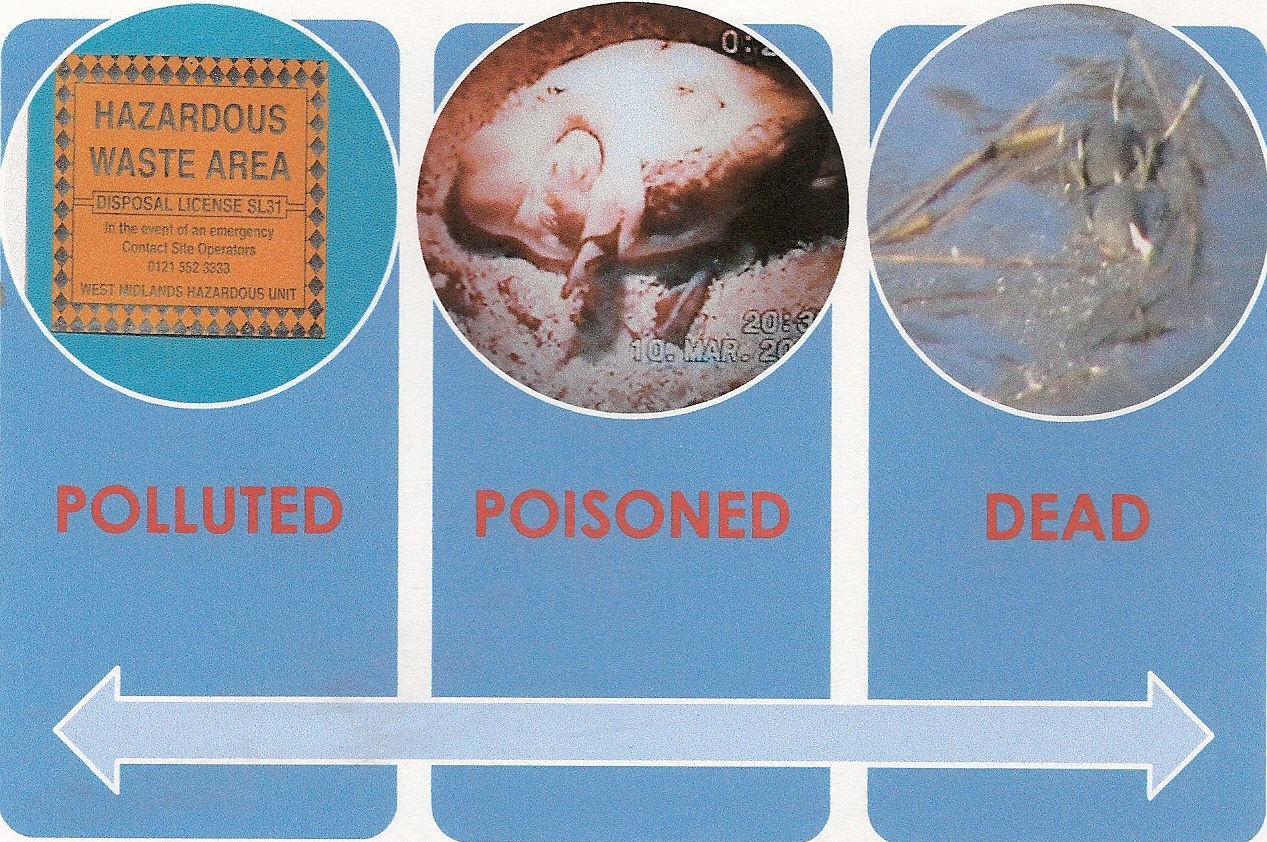Dozens of wildfowl have been found dead or dying on the Rattlechain lagoon, with many now being confirmed to have suffered systemic white phosphorus poisoning.
Early studies such as that of Coburn DR, DeWitt JB, Derby JV Jr, Ediger E. 1950. Phosphorus poisoning in waterfowl. J Am Pharm Assoc 3:151–158.
found that “Black ducks and mallards were found to be highly susceptible to phosphorus poisoning. 3 mg. of white phosphorus per kg. of body weight given in a single dose resulted in death of a black duck in 6 hours. Pathologic changes in both acute and chronic poisoning were studied.”
A further study
BLOOD CHANGES IN MALLARDS EXPOSED TO WHITE PHOSPHORUS, DONALD W. SPARLING, STEPHANIE VANN, and ROBERT A. GROVES notes
“Because P4 is lipophilic, adipose tissue provides the most reliable source for residue determination in birds [8], but residue levels in dosed animals drop below detection limits within a few days …”
Sparling_et_al-1998-Environmental_Toxicology_and_Chemistry
This means that white phosphorus is attracted to fatty tissue and although being present in enough of a dose to kill the birds, detecting it after just a few scant days becomes very difficult. It should be remembered that the Rattlechain birds were not taken for testing by Rhodia for p4 analysis for many months in some cases, and so the levels would have been much higher if they had been tested within hours of death.
The study also concludes
“One of the earliest and most dramatic effects of P4 toxicity is the destruction of erythrocytes that can severely reduce oxygen transport and result in the convulsions and sterotypic behaviors associated with acutely lethal doses of P4. “
Dying birds at Rattlechain have shown these clinical signs of white phosphorus poisoning, almost certainly after having acutely ingested particles in the sediment of the lagoon. Video of these birds symptoms have been viewed by experts in the USA who have investigated and dealt with white phosphorus poisoning at Eagle River Flats, an Alaskan Salt Marsh used as a military firing range.
“THE SYMPTOMS IN THE BIRDS WERE DEFINATELY SIMILAR TO BIRDS OBSERVED AT EAGLE RIVER FLATS, ALASKA, AND MALLARDS INTENTIONALLY TREATED WITH WHITE PHOSPHORUS. THERE IS NO QUESTION THAT THE BEHAVIOURS OF THE BIRDS IN THE VIDEO PROVIDED AND WHAT I HAVE SEEN IN BIRDS EXPOSED TO WP ARE THE SAME OR SIMILAR.”
They believe the clinical signs seen in dying birds at Rattlechain lagoon to be consistent with white phosphorus poisoning and have also acknowledged that levels found in the dead birds at Rattlechain are similar to those found in the wild at the US site. They have also acknowledged that secondary poisoning affecting predators is possible, as is the prospect of birds that have ingested P4 leaving the site and dying elsewhere.

